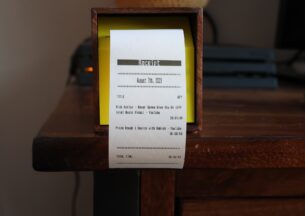Pedro Lopes’ Laboratory Featured in UChicago Magazine

Which UChicagoCS laboratory looks like “If Stanley Kubrick and Ed Wood had teamed up to imagine the year 2019”? If you guessed the Human Computer Integration lab of assistant professor Pedro Lopes, you're correct. For University of Chicago magazine, writer Maureen Searcy visited Lopes and his students to learn about playing air theremin, stretchable computer circuits, using smell to make virtual reality more realistic, and a multitude of other projects putting the science in science fiction.
The feature uses Lopes' work to examine the broader field of human-computer interaction, or HCI, and how UChicagoCS researchers combine user-centered studies, security and privacy research, and data from sensors, mobile devices, and wearable technology to learn how to design better computer systems. Lopes and his laboratory approach the problem by prototyping future uses of technology using innovations such as electrical muscle stimulation and virtual reality, then examining the ramifications through both science and art.

Sometimes art works better than empirical methodology to explore an idea, so he takes “that route rather than the hypothesis-testing approach.” When his team brainstorms, often there’s an outlier that they realize would make a great art project. (Several lab members are also artists.) “It’s such an interesting space to probe people’s imaginations.”
Questions of flow and directionality and control only matter so long as there’s a disconnect—no matter how minuscule—between humans and computers, but Lopes’s grand, overarching goal is to achieve complete fluidity between technology and us. In fact, his research group is called the Human Computer Integration Lab, emphasizing the expanded scope beyond simple interaction.
“A good interface matches your expectations,” says Lopes. It feels natural and does exactly “what it afforded you to do.” By moving certain interfaces to the body itself, he’s removing instrumentation, making for a more organic experience. You shouldn’t know where you end and the tech begins.
“Good HCI has no I—it just happens,” says Lopes. “So my secret objective for the field is to destroy it.”
Read the full feature for more on Lopes' work, including the time he allowed a concert audience to control a band using a web app and a project using EMS to augment users' drumming abilities.













